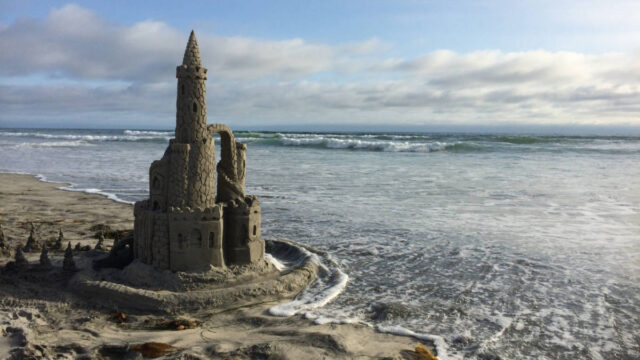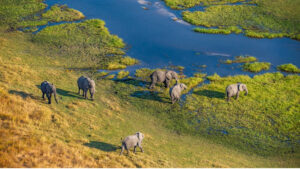Australia is currently the world’s largest lithium producer and for good reason. We were amongst the first movers, have a world class mining regime and large resources with ready access to infrastructure and support services.
But we are not alone.
Bolivia, Argentina and Chile, the so-called “lithium triangle” in South America, have been nipping at our heels with massive lithium resources contained within lithium brines while the search for resources of the battery metal is accelerating across the globe.
Even India and Iran have gotten in on the game with the former declaring that it has found 5.9 million tonnes of lithium (ore, lithium carbonate equivalent? We’re not sure), which its social media commentators have – in a pique of nationalistic pride – quickly declared to be the seventh largest resource in the world.
Iran has (somewhat more sanely) announced the discovery of its first-ever lithium deposit with 8.5Mt of ore (not actual lithium, as championed by a wildly excitable social media crowd).
While the veracity of the former claim is dubious at best, both India and Iran’s announcements, coming as they did within a short time from each other, is a clear sign that the appetite for lithium is growing.
And everyone’s keen to get a piece of the pie to ensure their own supply security.
‘Currently, Australian mined supply makes up just over 40% of the global market, with this figure forecasted to be around 20% in 2030…’
Speaking to Stockhead, PwC Australia partner Marc Upcroft said that there’s plenty of lithium to be found across the world and that very little of it has been mined historically because we haven’t had a use for it until recent years brought the growth in electric vehicles and energy storage.
“There’s lots of potential projects that are in the works to supply the world with more lithium though not all of them will make it through to development due to chemistry and economics,” he noted.
“But fundamentally, we need so much of it that if we’re ever going to stick to an accelerated net zero timeline, we almost need all of it.”
This of course begs the question, can Australia maintain its relevance as a leading producer of lithium?
Staying ahead of the pack
There is little doubt that all the lithium developments across the world will chip away at Australia’s lead.
“We’ve got a lithium market at the moment where there’s effectively insufficient supply for that demand, so we do need all the extra exploration, development and production of lithium if we’re going to go close to meeting that extra demand that’s really coming from EVs and batteries,” Upcroft noted.
“That needs to be at the mine source but also in downstream processing as well ultimately into batteries.
“The point I am making is that Australia will remain a very important part of that supply story partly because we’re already operating.
“We still have got reserves and great projects that we’re looking at while from a downstream perspective, we’ll soon represent about 20% of lithium hydroxide production capacity.”
Have a gander at our very own Josh Chiat’s two part take on ASX miners that are focused on becoming lithium chemical producers to catch more of the EV supply chain (Part 1, the hydroxide players and Part 2, the carbonate crowd).
Upcroft also believes that as markets become more balanced when supply catches up with stabilized demand growth, ESG credentials will becoming increasingly important.
“Australia’s got an excellent reputation as a reliable supplier of minerals with the right ESG credentials. For a big part of the global economy, that is a very strong factor in Australia’s favour.”
Benchmark Mineral Intelligence senior price analyst Daisy Jennings-Gray concurred, noting that whilst lithium supply is diversifying, Benchmark anticipates that Australia will remain a key lithium producer going forward.
“Currently, Australian mined supply makes up just over 40% of the global market, with this figure forecasted to be around 20% in 2030,” she added.
“Whilst this sounds like a significant decrease in Australia’s lithium market share, these numbers still leave the country forecasted as the world’s largest lithium supplier, with Chile and Argentina both set to be below 20% of global supply respectively and the US below 10% by the end of the decade.
“I would say Australia’s main advantages in staying ahead are associated with its history in mining and its existing stronghold in the lithium space.
“Many other regions focussing on developing hard rock lithium supply have already faced opposition to these projects, whereas Australia has typically embraced the mining industry.”
Jennings-Gray added that expanding existing projects in Australia is much quicker than beginning a new hard rock project at a greenfield site, while the expectations of increasing lithium hydroxide demand vs carbonate have made hard rock projects more appealing compared to some traditional brine projects, which are usually in South America.
Hot air or domestic relevance?
What is also clear is that the Indian and Iranian discoveries are unlikely to meaningfully impact on Australia’s leading role in the lithium space.
Jennings-Gray noted the key word used in both countries’ announcements was “resource”.
“A resource is simply the amount of a desired material in the ground in a certain region,” she noted.
“Until an accurate reserve figure can be calculated, which takes into consideration how much of that mineral can be economically extracted, these numbers mean very little, and as such there is not yet any impact from these announcements.”
Upcroft was a little more forgiving, noting that while he wasn’t entirely familiar with the two countries lithium announcements, he suspected that they could potentially be very impactful to downstream processing of lithium chemicals and batteries that are intended to be made and manufactured and sold in their respective countries.
NOW READ: Head to Head: How do advanced ASX lithium stocks stack up against their TSX-listed peers?
ASX junior lithium plays
With that bit of reassurance that Australia will continue to be a key lithium supplier, here’s a selection of junior miners with either defined local lithium resources, possess a solid suite of drill results, or have drawn the attention of a major player.
Auroch Minerals (ASX:AOU)
Drilling at Auroch’s Kangaroo Hills project in Western Australia’s Goldfields region has just returned some intriguing assay results including a standout 29m intersection grading 1.36% Li2O from a down-hole depth of 38m.
The intersection in KHRC011 is significant as the hole was a late addition to the drill program after in-field observations led its geology team to believe there was potential for a shallow pegmatite present further east of the planned drill holes
Auroch believes the result supports its belief that Kangaroo Hills hosts a large-scale, shallow lithium-rich pegmatite which is open to the east, north and south.
Azure Minerals (ASX:AZS)
Lithium exploration at Azure’s Andover project is still at an early stage but thick intersections of spodumene-bearing pegmatites along with earlier drilling returning significant visible spodumene of 7.2m grading 1.51% lithium oxide from a down-hole depth of 313.9m are certainly intriguing.
Intriguing enough that lithium giant Sociedad Quimica y Minera de Chile to make a $20m investment into the company.
Should assaying of the most recent drilling return positive results, the company could be looking at some very substantial lithium resources given that Andover – shared with 40% partner Creasy Group – has more than 700 individual outcropping pegmatites occurring in a zone about 9km long and up to 4km wide in the central and eastern parts of the project area.
Charger Metals (ASX:CHR)
Further assays are currently pending for maiden drilling, which has demonstrated that the spodumene-rich pegmatites at the company’s Metcalf prospect spreads further and deeper than previously known.
Its lithium prospectivity is already proven with initial assays returned assays of up to 5m grading 2.55% Li2O from a down-hole depth of 68m including a higher grade zone of 2m at 4.19% Li2O in multiple stacked spodumene pegmatites.
The results from Metcalf indicate that Lake Johnstone, which originally drew attention due to its proximity to Covalent Lithium’s Earl Grey project, has plenty of potential in its own right.
Essential Minerals (ASX:ESS)
Essential is the current target of a takeover offer from Tianqi Lithium Corporation that prices it at 50c per share and there’s good reason for the offer, which represented a 36.3% premium to its 30-day volume weighted average price.
The company recently unveiled a Scoping Study which estimated that its Pioneer Dome project could deliver post-tax internal rate of return and net present value – both measures of a project’s profitability – of 40% and $367m respectively.
Capex has been estimated at $293m with payback in just 1.7 years.
This follows a 81% increase in resources to 11.2Mt at 1.16% Li2O for 129,000t of contained lithium.
Everest Metals Corporation (ASX:EMC)
The company’s Rover project in Western Australia has drawn a farm-in from Rio Tinto after the mining giant identified a sub-cropping weathered pegmatite unit considered prospective for lithium and tantalum mineralisation.
Rio may earn-up to 80% of the non-gold mineral rights at Rover by sole funding $5m of non-gold exploration. As part of this, it is planning to carry out a focused initial drill program of up to 1,000m to test the interpreted lithium pegmatite targets this year.
Everest is also keen to get stuck in on its Mt Edon Lithium-Caesium-Tantalum project, which hosts numerous LCT pegmatites with lithium and caesium rich zones with sampled grades of up to 2.2% Li2O and 550 parts per million caesium.
Over in New South Wales, the company is in the Broken Hill joint venture with Stelar Metals. This includes the Trident project that contains multiple pegmatite swarms mapped along strike over 15km.
Global Lithium (ASX:GL1)
Drilling at the company’s Manna project has highlighted a large northeastern extension of the existing deposit following the receipt of most assays from its drilling in 2022.
Notable results include 19m grading 1.2% Li2O from 263m, 17m at 1.76% Li2O from 341m and 15m at 1.72% Li2O from 277m.
An interim resource upgrade is currently underway using the remaining assay results from the 2022 drilling program. It is anticipated that these results will improve the level of confidence and add to the overall size of the resource.
The Manna project currently has a resource of 32.7Mt at 1% Li2O.
A large-scale, 35,000m drill program carried out this year to drill out and define new prospective areas within Manna.
Kalamazoo Resources (ASX:KZR)
Kalamazoo is progressing its Pilbara lithium project joint venture with SQM with the recent identification of spodumene-bearing pegmatite dykes that outcrop for at least 1.1km strike extent at the Marble Bar project.
Results from 2022 reconnaissance drilling at the Marble Bar and DOM’s Hill projects has intersected lepidolite-bearing pegmatite dykes at three prospects in Marble Bar and significant quartz-veining and one unmineralised pegmatite at DOM’s Hill.
The 2023 field exploration program that is currently being planned includes a Phase 2 drill program as well as further evaluation of the spodumene-bearing dykes at Marble Bar.
Lithium Plus Minerals (ASX:LPM)
Lithium Plus’ Phase 2 diamond drilling has discovered a second shallow pegmatite at the Lei prospect with high-grade spodumene intersected in three drill holes.
Notable results from this drilling are 21.2m at 1.74% Li2O from 398.8m, 14.7m at 1.19% Li2O from 216.8m, and 11m at 0.78% Li2O from 215m.
Remaining assays from the Phase 2 drilling are pending.
Additionally, regional mapping programs define further pegmatite occurrences at Lei and in the northern tenement with targets identified for follow-up assessment.
Red Dirt Metals (ASX:RDT)
Red Dirt has a fast-track strategy to target commencement of mining at its flagship Mt Ida lithium project in WA’s historical Mt Ida gold mining district, which has a current resource of 12.7Mt grading 1.2% Li2O, this year.
The project already has a granted mining lease as well as completed heritage and environmental studies.
Resource expansion drilling and lithium concentrate studies are also underway.
It has also reported early shallow and wide lithium intersections of up to 35.2m grading 1% Li2O at its Yinnetharra project in WA’s Gascoyne region.
Riversgold (ASX:RGL)
Assays from drilling carried out last year has proven without a doubt that lithium is present at the Bengal prospect within Riversgold’s Tambourah project in WA’s Pilbara region.
Notably, 20 of the 21 holes drilled struck a cumulative total of 143m of interpreted lithium-caesium-tantalum pegmatite, with two intercepts from a 14m wide pegmatite in TMBC003 assaying more than 1% Li2O.
Results from recent field programs are expected in the next few weeks and will form the basis for a new drilling and exploration program scheduled to start in March 2023.
This success is encouraging given the Tambourah project’s location deep in elephant country, surrounded by two of the world’s largest deposits in Pilbara Minerals’ Pilgangoora and Mineral Resources’ Wodgina mine.
Venus Metals (ASX:VMC)
Venus Metals’ heavyweight partner IGO (ASX:IGO) has kicked off ground exploration activities at their Greenbushes East Exploration Project that’s adjacent to the giant Greenbushes lithium mine.
IGO, which has a controlling interest in the mine along with partner Tianqi Lithium Corporation, is collecting 1,350 soil samples to provide a project-wide framework for further targeting and supplement previous geochemical surveys in specific target areas.
This is part of the farm-in agreement under which the miner can earn up to 70% of the project by incurring $6m in exploration expenditure, allowing Venus to piggy-back on this work at no cost.
Zenith Minerals (ASX:ZNC)
Additional assays received from Zenith’s 100-hole drill campaign carried out in 2022 have extended lithium mineralisation at its Rio Pegmatite – Split Rocks project.
The new zone identified over 2,800m by 1,100m with a higher grade core (>0.3% Li2O) was defined by drill results such as 8m grading 1.1% Li2O and 22m at 0.7% Li2O in ZVRC110 and 12m at 0.6% Li2O.
These new lithium intersections are either 100m west of, or 200m south of the previously reported assay results from drill hole ZVCD039, which intersected two zones of 26m at 1.2% Li2O including 13m at 1.9% Li2O (upper zone) and 23m at 0.8% Li2O including 8m at 1.3% Li2O (lower zone).
Assays for a further 17 reverse circulation and four diamond drill holes, including 11 holes testing regional lithium targets are still pending.
At Stockhead we tell it like it is. While Auroch Minerals, Azure Minerals, Charger Metals, Riversgold are Stockhead advertisers, they did not sponsor this article.
You might be interested in












